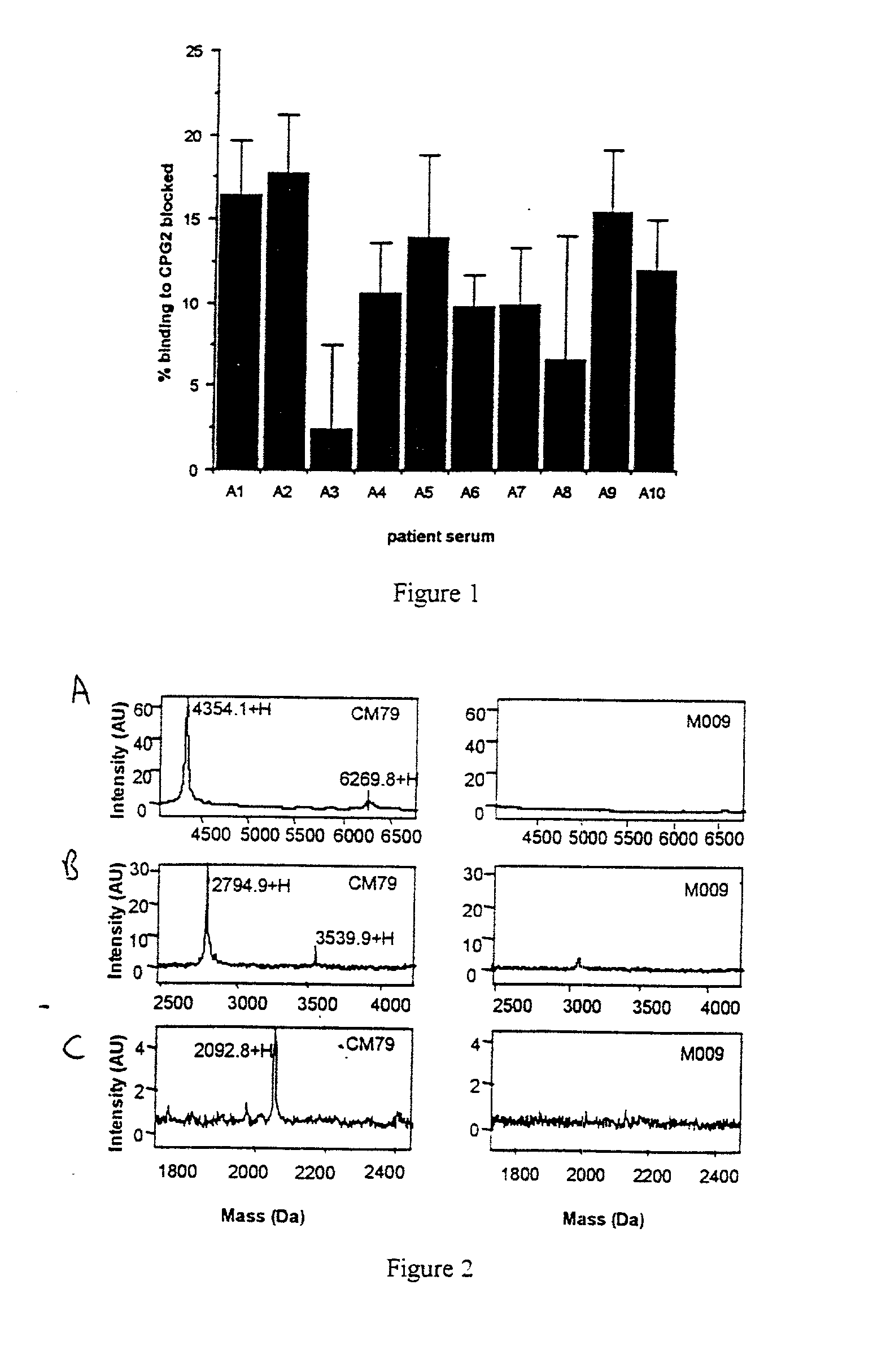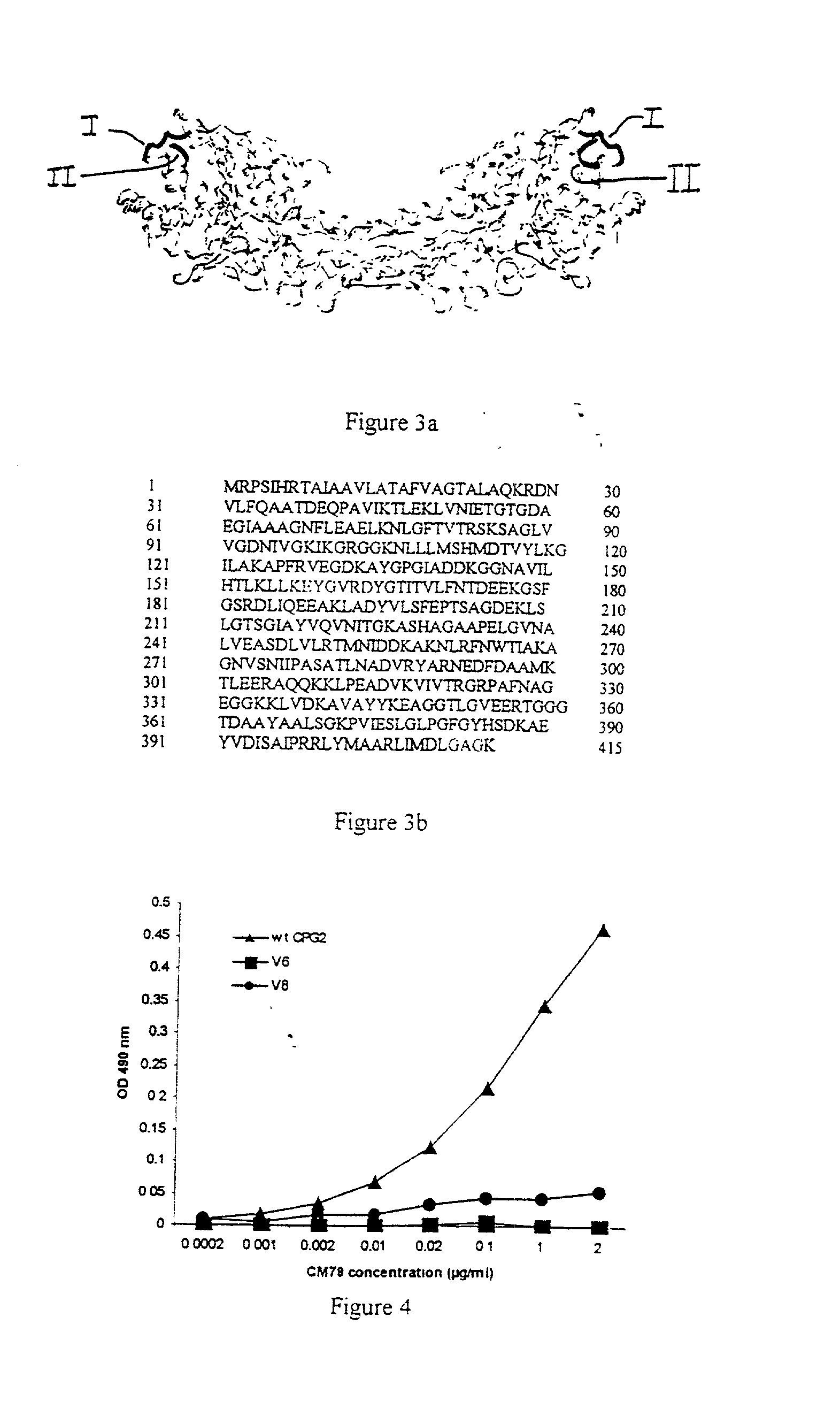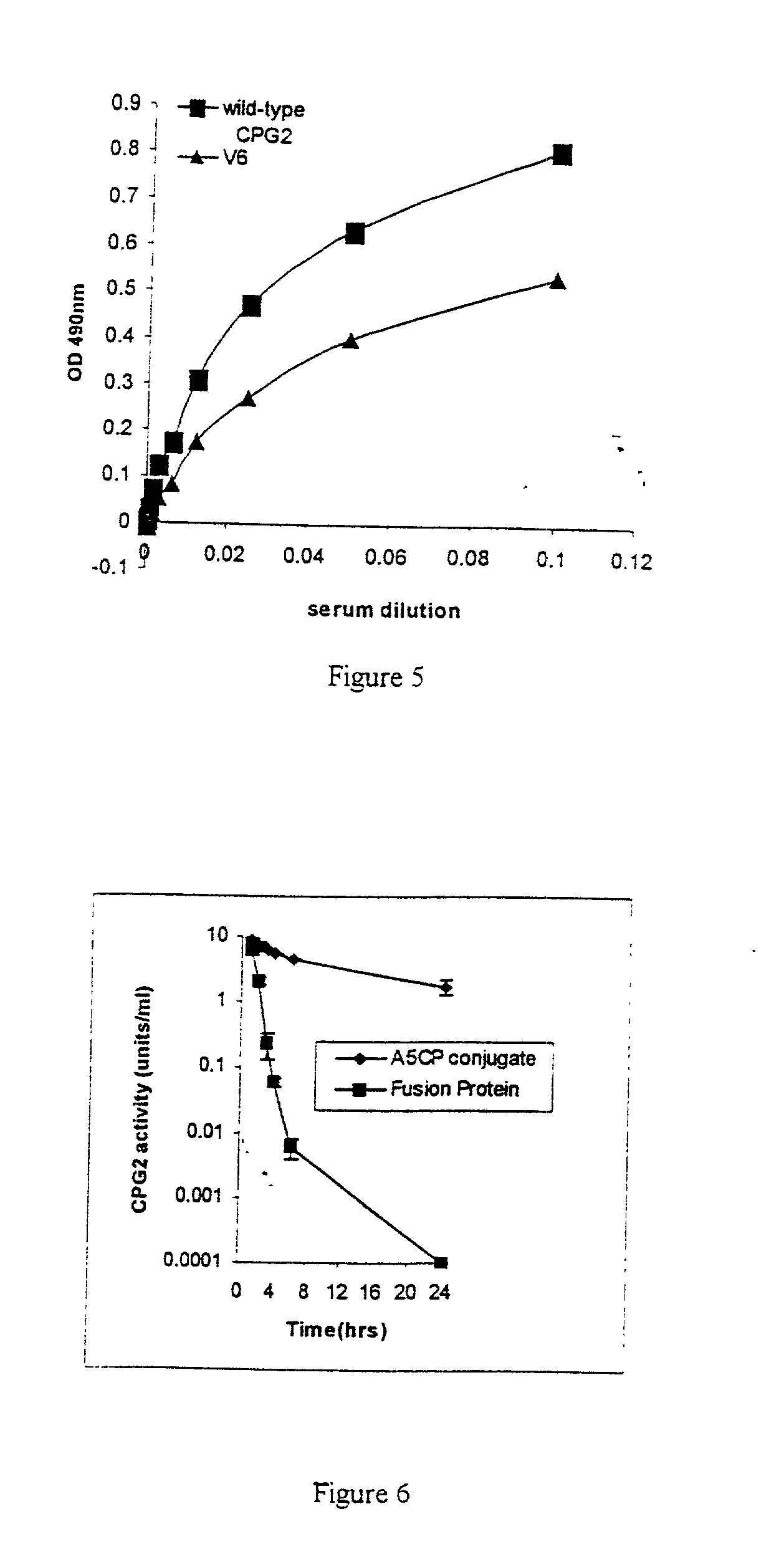Modifided carboxypeptidase enzymes and their use
a carboxypeptidase and enzyme technology, applied in the direction of peptides, peptide/protein ingredients, enzymology, etc., can solve the problems of inability to cure patients with advanced or metastatic disease, and the immune response of enzymes in patients
- Summary
- Abstract
- Description
- Claims
- Application Information
AI Technical Summary
Benefits of technology
Problems solved by technology
Method used
Image
Examples
example 1
Identification and Modification of Immunogenic Epitopes
[0102] As described below, from a filamentous phage library of antibody genes obtained from CPG2 immunized mice we isolated two single chain Fv antibody fragments (CM79 and CM12) that partially blocked the polyclonal antibody response generated in patients who received CPG2 in ADEPT therapy. Using specialized metal chips coated with CM79 / CM12 followed by antigen binding, selective proteolysis and surface enhanced laser desorption ionization affinity mass spectrometry (SELDI-AMS) the immunogenic region of CPG2 was characterised as incorporating the C-terminus and three loops from sequentially remote sequences which bound to both CM79 (C-terminus and one loop) and CM12 (three loops). (From these results, the immunogenic regions corresponding to SEQ ID NOS: 1,2,3,4 were derived. We confirmed and silenced the epitopes corresponding to SEQ ID NO:2 and SEQ ID NO:4 by mutagenesis to give CPG2 variants with negligible binding to CM79. T...
example 2
Glycosylation of CPG Improves Retention of Fusion Proteins in Tumours Despite Rapid Clearance From Normal Tumours
[0123] Although radiolabeled fusion protein of MFE-23::CPG2 expressed in E.coli has been shown to be promising candidate for ADEPT if favorable enzyme delivery is established (Bhatia et al, Int. J. Cancer 85 571-577, 2000), the yields obtained with this bacterially expressed product were too low for developing a clinical product. Therefore, the present inventors have investigated expression in yeast Pichia pastoris. The Pichia pastoris expressed product was constructed with tags for identification and expression. Experiments performed with the Pichia pastoris expressed fusion proteins led to two unexpected findings:
[0124] a) that the glycosylated fusion proteins were retained in active form in the tumour, despite rapid clearance from normal tissues (described in the present Example);and
[0125] b) that the presence of C-terminal tags reduced immunogenicity in animal models ...
example 3
Tagging the CPG2 Protein Reduces Immunogenicity
[0143] This example demonstrates that tagging of CPG2 with his or myc-his results in reduced immunogenicity. In particular, MFE-23::CPG2 gly-myc-his has very low immunogenicity.
[0144] 3.1 Immunogenicity Assay
[0145] Balb / C mice (6-8 week old females) were injected with the following fusion proteins (50 ug protein per mouse i.p) at one month intervals.
[0146] 1. MFE-23::CPG2 gly-myc-his (P. pastoris)
[0147] 2. MFE-23::CPG2gly-his (P. pastoris)
[0148] 3. MFE-23::CPG2-his (E. coli)
[0149] 4. MFE-23::CPG2 (E. coli).
[0150] Blood was collected from mice at 14 days post each immunisation. Bloods were tested for mouse anti-CPG2 antibodies by standard ELISA procedures. Briefly, 96-well microtitre plates were coated with 100 .mu.l of CPG2 (10.mu.g / ml in coating buffer) overnight at 4.degree. C. Wells were blocked with 250 .mu.l of 3% BSA for 1 hour and washed with PBS followed by distilled water. Mouse sera (.times.100 dilution) were incubated in dupl...
PUM
| Property | Measurement | Unit |
|---|---|---|
| Fraction | aaaaa | aaaaa |
| Fraction | aaaaa | aaaaa |
| Fraction | aaaaa | aaaaa |
Abstract
Description
Claims
Application Information
 Login to View More
Login to View More - R&D
- Intellectual Property
- Life Sciences
- Materials
- Tech Scout
- Unparalleled Data Quality
- Higher Quality Content
- 60% Fewer Hallucinations
Browse by: Latest US Patents, China's latest patents, Technical Efficacy Thesaurus, Application Domain, Technology Topic, Popular Technical Reports.
© 2025 PatSnap. All rights reserved.Legal|Privacy policy|Modern Slavery Act Transparency Statement|Sitemap|About US| Contact US: help@patsnap.com



